
 |
 |
 |
 |
 |
 |
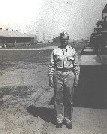 |
 |
Flight school began with pre flight training at Santa Anna Army Base in July of 1942. Here the new cadets learned the basics of flight in a ten week course. The photos above are of Woodie and fellow cadets.
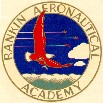 |
 |
 |
 |
 |
 |
In October, 1942, Woodie transferred to Rankin Aeronautical Academy in Tulare, California for primary flight training. As you can see in the photos above, the cadets are trying out their flight gear for the first time. Woodie is wearing a leather AAC flight cap and A2 issue flight jacket in several of the photos. Rankin Academy was established in 1940 by Tex Rankin, one of the preeminent aerobatic pilots of the day. The Academy ran for 54 months and trained over 10,450 AAC cadets, 12 of which became aces in World War II. Included in this number was MAJ Richard I. Bong, Medal of Honor winner and top scoring ace in World War II with 40 kills.

 |
 |
 |
 |
 |
 |
 |
 |
 |
 |
 |
 |
 |
 |
 |
 |
 |
 |
After primary training, Woodie transferred to the Polaris War Eagle Flight Academy in Lancaster, CA for 2 months of basic flight training. The photos above are of my grandfather while a cadet at Polaris. His aircraft is a Vultee BT-13 (BT for Basic Trainer) labeled "WAR EAGLE FIELD." Starting in July 15, 1941, thousands of R.A.F. and Canadian Air Cadets received basic training in the Antelope Valley at War Eagle Field. After the bombing of Pearl Harbor, the United States Army Air Force Cadets also began training at the field. By August 10, 1942, a new group of US pilots arrived at Lancaster every four and one-half weeks to commence their basic training. After completing their training at Polaris, they were sent to Army Advanced Training posts. When finished with the advanced course, they received their wings and commission.
 |
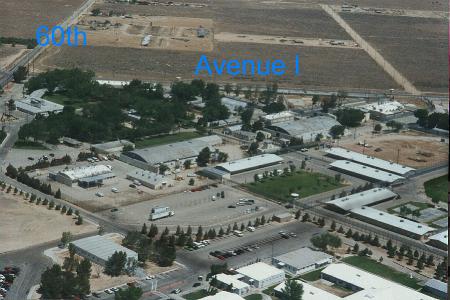 |
Here is a past and present day view of the old War Eagle Field. War Eagle, now known as Mira Loma, is owned by LA County and is used as an INS detention facility; it was a former LA County jail. Note the two still intact hangars that are still in use. The Mira Loma facilities are located near 60th Street West and Avenue I, in Lancaster, 4 miles west of the Antelope Valley Freeway (Highway 14). More information on the current facility can be found at the Mira Loma Detention Center Website. War Eagle Field was never called Mira Loma until 1944, when the name was changed to Mira Loma Flight Academy instead of Polaris. Interestingly, Mira Loma was originally the name of a different primary instruction school in Oxnard, CA, which was owned by the same man who operated Polaris Academy, a Mr. Moseley.
 |
 |
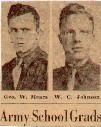 |
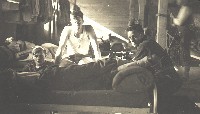 |
In February of 1943 Woodie transfered to the Roswell Army Flying School (class WC 43-D) in Roswell, NM, for advanced flight training. He arrived on 13 Feb 1943, and finally rated Pilot on 12 April, 1943. After this period of instruction, he was commissioned as a 2LT and sent to transition to the B-17. The Roswell Army Flying School took in its first students in 1941. Later, the school became Walker Air Force Base, a support base for Atlas ICBMs and the Strategic Air Command Center. It was one of the largest installations operated by the USAF Strategic Air Command. This base was eventually retired in 1967, and the airfield is now owned by the City of Roswell and used for civil aviation and as an industrial park. And yes, this is the same air base that allegedly "covered up" the rumored spaceship crash in Roswell following the war.
 |
 |
 |
 |
 |
 |
 |
Once my grandfather completed flight training, he was sent to a B-17 transition course in Hobbs, New Mexico, after which he was given a crew. The crew was originally assigned to the 401st Bomb Group, 615th Squadron. The Group Headquarters was in Great Falls Montana, with one Squadron. The other Squadrons were located at Cut Bank, Glasgow, and Lewistown Montana. The 615th was stationed at Lewistown. All of the Squadrons were many miles apart, and operated independently.
After completing their stateside training with the 401st, the crew flew to Scott Field for overseas processing. Their route overseas was from Scott Field to Syracuse New York, then to Bangor Maine, and from here to Gander Newfoundland. They were supposed to go to Goose Bay Labrador, but bad weather forced them to land at Gander. They flew from Gander to Northern Ireland, and arrived there on 26 October '43. Their next stop should have been the 401st's base at Deenethorpe, however, the base was not ready for the 401st, so a command decision was made to add 70 aircraft to the recently depleted 351st Bombardment Group. My grandfather's crew was one of these that was selected to transfer to the 351st. This guaranteed immediate action, because the 351st was already flying combat missions, as opposed to the newly formed 401st. Therefore, from Ireland they flew on to Polebrook Station 110 in England, where the 351st was based.